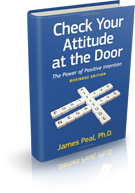
"Get your facts first, then you can distort them as you please."
Mark Twain
"Whatever hysteria exists is inflamed by mystery, suspicion and secrecy. Hard and exact facts will cool it."
Elia Kazan
|
RECOGNIZE YOUR THOUGHTS, FEELINGS & ENERGY
- "Let's step back and get a broader view."
- "What is another way to look at this?
- "What do we know as fact?"
- "What is your personal opinion?"
- "Let's find out what _______ thinks about the situation."
- "Here is what I see. What do you see?"
You are feeling calm and neutral, neither moving toward nor away from any viewpoint or perspective. You are aware of many distinctions but are not compelled toward any of them.
REALIZE WHAT IS DRIVING YOUR MINDSET
- Driven to rise above and see multiple perspectives simultaneously without attachment to a specific outcome.
- Giving equal weight to all choices.
- Looking at things factually as they are without bias and without judgement.
- Stepping out of your self-perception and assuming a perspective that is neutral.
- Neutral emotional quality is present, not emotionally inclined in any particular direction or drawn into any type of emotion.
- Is able to verbalize what is observed so that others can appreciate your vantage point.
RESOLVE BALANCE YOUR STRENGTHS
- Distinguish between the facts and your personal feelings about them or the situation. Verbally acknowledge and/or write our your personal biases.
- It is fine and normal to have a personal perspective attached to feelings; what gives you the strength is your ability to identify them and shift your focus to the facts.
- Notice when others may be biased by their emotional or ego attachments. Ask questions to clarify their position.
- Take 3 deep breaths to neutralize your internal feeling responses and then look again. Check to ensure you are emotionally neutral.
- Change your posture in some way to mark out moving to a neutral frame of mind; e.g., stand up, sit back, move your chair.
- Be curious about how others are perceiving the situation. Value multiple perspectives in determining an objectivity.
|





